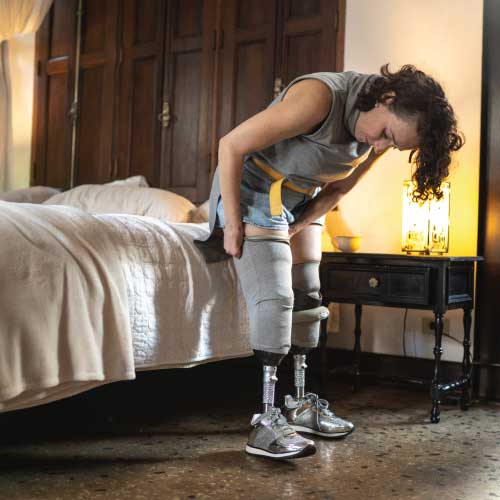Virginia Tech Smart Prosthetic Socket Aims to Improve Comfort and Performance
Individuals with an above- or below-knee amputation know that the fit and comfort of their prosthetic limbs degrade throughout the day. This is due to volume loss caused by many factors, including weight fluctuations, physical activity, and hydration levels. While volume loss around the residual limb is normal, it can still lead to skin irritations, soft tissue injuries, and pain. This is where an improved prosthetic socket will come in handy.

Virginia Tech College of Engineering researchers have been studying volume loss and developing a smart prosthetic socket to improve user comfort and prosthetic limb performance. Michael Madigan, a Grado Department of Industrial and Systems Engineering professor, and Michael Philen, an associate professor of the Kevin T. Crofton Department of Aerospace and Ocean Engineering, lead the project. They combine their expertise in biomechanics and smart materials.
“Part of our research is examining what happens inside the prosthetic socket. We’ve been using some new engineering tools for measuring the strain or deformation of the prosthetic liner, which is related to the deformation of the residual limb. This new technique, Digital Image Correlation, measures how the limb will perform through the prosthetic socket,” Madigan said.
The researchers also need to identify the regions of higher and lower strain in the prosthetic socket, which allows them to adjust the socket’s fit. “After collecting this data, our team will do the analysis. We’ll run the Digital Image Correlation analysis to analyze the strain points, then compare that analysis to our finite element model,” said Masaki Hada, a Virginia Tech College of Engineering student.
“A large subset of aerospace is structural analysis. This Digital Image Correlation testing is helpful with structural analysis without interacting directly with the body you’re analyzing,” said Abbie Bailey, also a student at the college.
Another student, Sarah Scheerer, said, “The idea for this data is to work with clinicians and figure out how to improve the prosthetic socket to make it a better fit for amputees.”
You can watch the process here:











































































